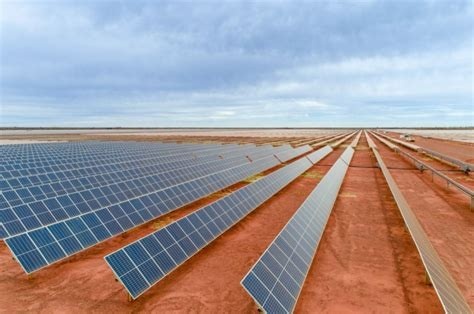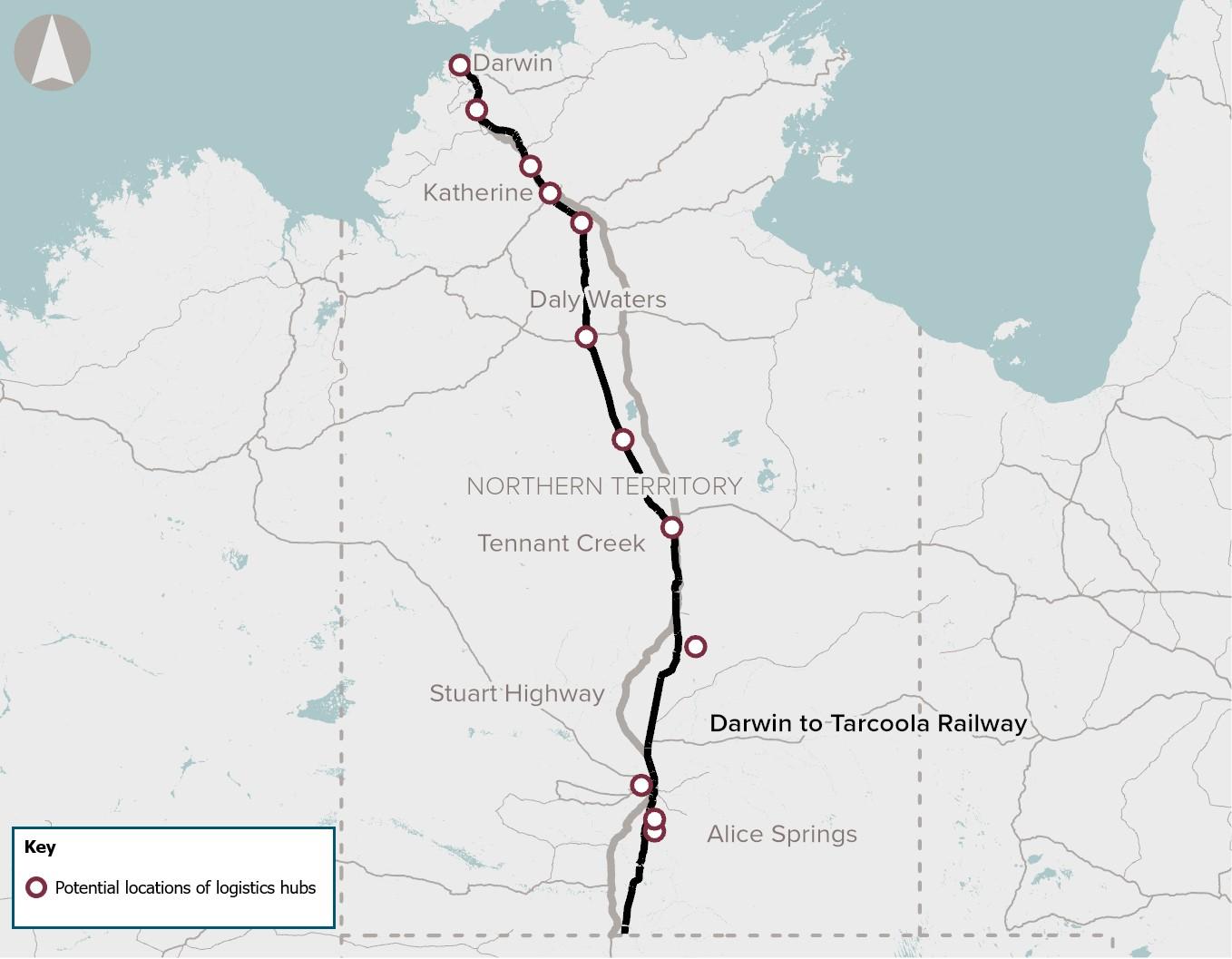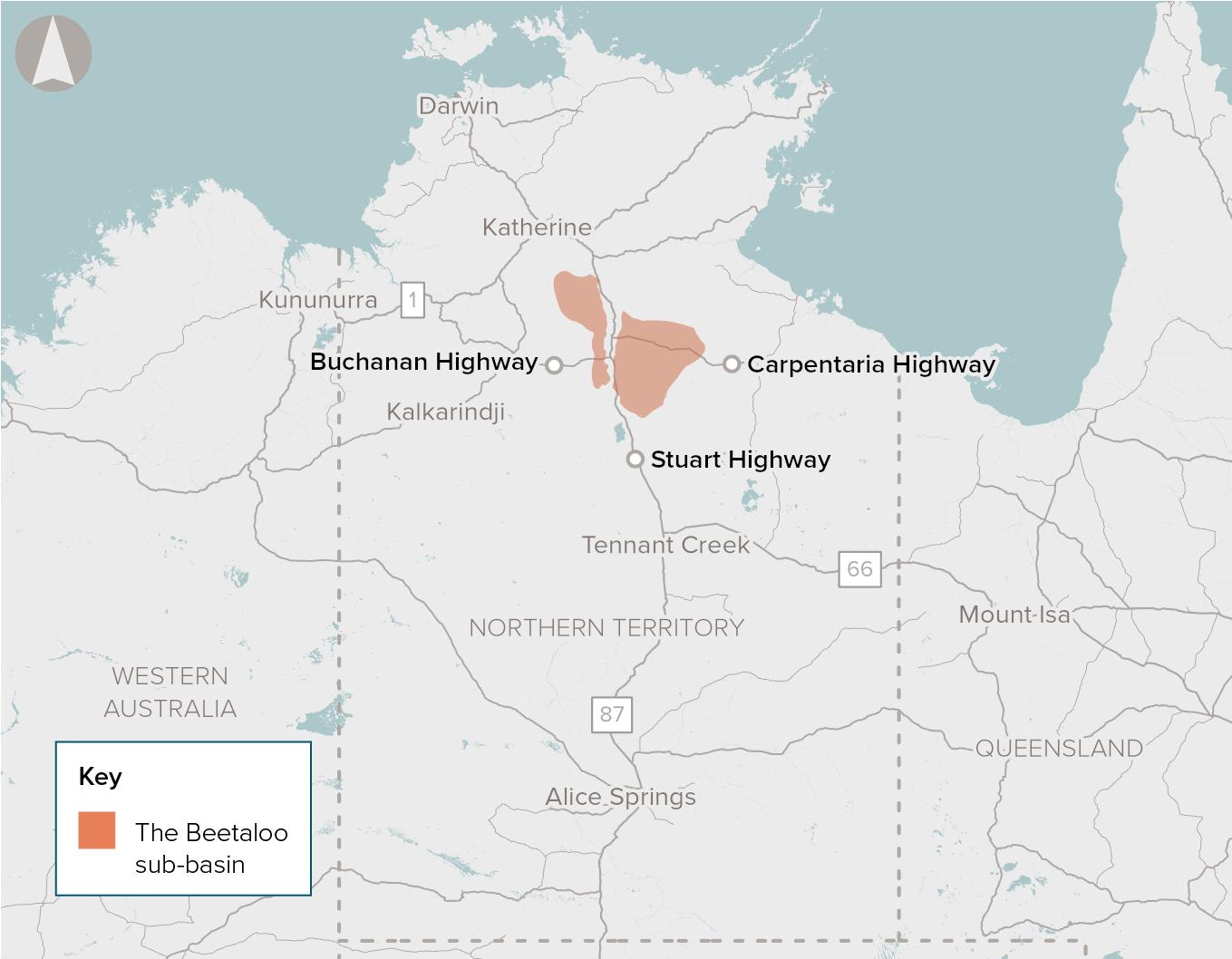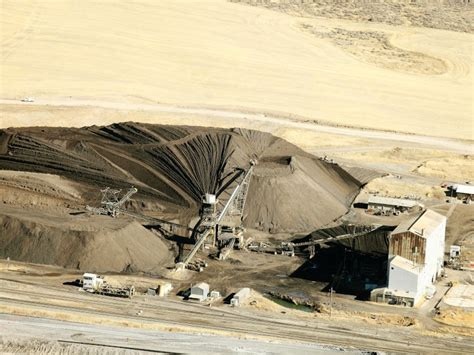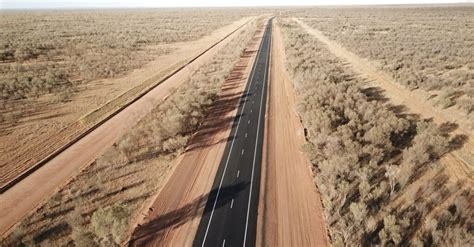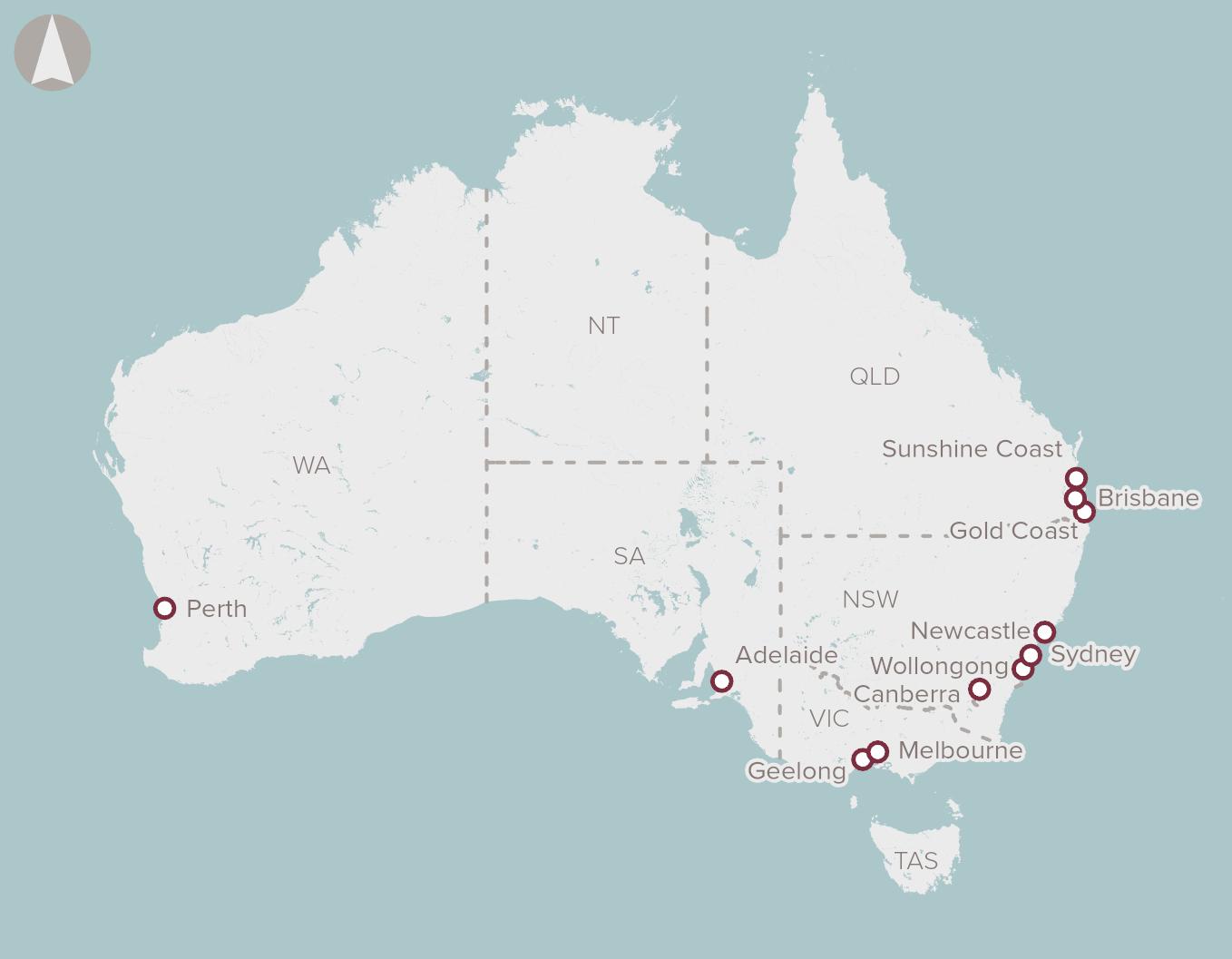Chart Color Schemes
est. as @ -- *
ABS ERP | -- people | --
2021 Census | -- people
Sales Activity
Curious about local property values? Filter the chart to assess the volume and appreciation (including resales) trends and regional comparisons, or scroll to the map below view this information at an individual property level.
Find a Recent Sale
Sales Detail
Population
Barkly has shown very soft population growth performance across periods assessed by AreaSearch
Barkly's population was approximately 2,628 as of August 2025. This figure represents a rise of 425 individuals, equivalent to a 19.3% increase since the 2021 Census, which recorded a population of 2,203 people. The growth is inferred from ABS's estimated resident population of 2,547 in June 2024 and an additional 36 validated new addresses post-Census date. This results in a population density ratio of 0.00 persons per square kilometer, indicating ample space per person. Barkly's 19.3% growth since the 2021 census surpassed both national (8.6%) and state averages, positioning it as a regional growth leader. Natural growth drove this increase, contributing approximately 77.2% of overall population gains during recent periods.
AreaSearch uses ABS/Geoscience Australia projections for each SA2 area, released in 2024 with a base year of 2022. For areas not covered by this data and to estimate growth post-2032, AreaSearch applies growth rates by age cohort, provided by the ABS in its latest Greater Capital Region projections (released in 2023, based on 2022 data). Demographically, Barkly is expected to experience population growth slightly below the median of Australian non-metropolitan areas. By 2041, based on current trends, Barkly's population is projected to increase by 256 persons, representing a total rise of 6.7% over the 17-year period.
Frequently Asked Questions - Population
Development
AreaSearch assessment of residential development drivers sees a low level of activity in Barkly, placing the area among the bottom 25% of areas assessed nationally
Barkly has recorded around 6 residential properties granted approval each year. Development approval data is produced by the ABS on a financial year basis: 34 homes over the past 5 financial years, between FY20 and FY25, with 1 approval so far in FY26. The area has experienced population decline, suggesting new supply has likely kept up with demand, offering good choice to buyers. New dwellings are developed at an average value of $625,000, somewhat higher than regional norms, reflecting quality-focused development.
This year, $627,000 in commercial approvals have been registered, indicating minimal commercial development activity. Compared to the Rest of NT, Barkly records about three-quarters the building activity per person, placing it among the 69th percentile nationally, though construction activity has intensified recently. This activity is below average nationally, reflecting the area's maturity and possible planning constraints. New development consists of 86.0% standalone homes and 14.0% attached dwellings, maintaining Barkly's traditional low density character with a focus on family homes appealing to those seeking space.
The location has approximately 195 people per dwelling approval, indicating an expanding market. Population forecasts indicate Barkly will gain 175 residents through to 2041. With current construction levels, housing supply should adequately meet demand, creating favourable conditions for buyers while potentially enabling growth that exceeds current forecasts.
Frequently Asked Questions - Development
Infrastructure
Barkly has limited levels of nearby infrastructure activity, ranking in the 16thth percentile nationally
Changes to local infrastructure significantly impact an area's performance. AreaSearch has identified 16 projects likely to affect the area. Notable ones are Barkly Regional Deal, Connection Between Eastern Gas Markets And Gas Suppliers, Major Housing Improvements in Epenarra (Wutunugurra), and Epenarra Basketball Court Shelter. The following list details those most relevant.
Professional plan users can use the search below to filter and access additional projects.
INFRASTRUCTURE SEARCH
Frequently Asked Questions - Infrastructure
Tennant Creek Aviation and Accommodation Hub
ADG has released a draft concept plan for a staged upgrade of Tennant Creek Airport to support regional aviation and logistics growth in the Barkly. The plan proposes extending and strengthening the main runway for regular jet operations, expanding the apron and terminal facilities, modernising electrical systems and signage, and delivering an Essential Key Worker Accommodation Precinct for up to 100 personnel to support government, defence and industry operations.

Barkly Regional Deal
A 10-year, $100.5 million partnership between the Australian Government, the Northern Territory Government, and the Barkly Regional Council to improve the productivity and liveability of the Barkly region. The deal includes 28 initiatives covering economic development, social programs, and infrastructure. Wutunugurra is one of the communities benefiting from this deal.
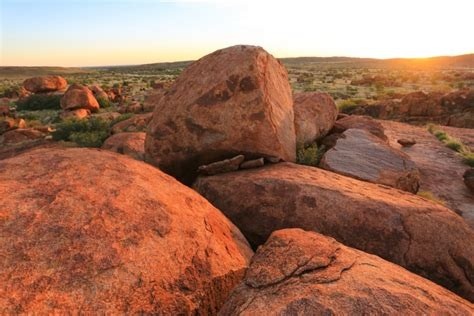
Connection Between Eastern Gas Markets And Gas Suppliers
This proposal is for developing infrastructure to connect northern Australian gas reserves to the eastern gas markets. The Northern Gas Pipeline, completed in 2018, connects Tennant Creek to Mount Isa, linking Northern Territory gas supplies with the eastern gas market and supporting economic growth in the Northern Territory. Additional pipeline connections, such as between Palm Valley and Moomba, are being considered. Feasibility depends on future gas demand in the eastern states and the viability of new gas fields in the Northern Territory. Potential connections to the Galilee Basin in Queensland could deliver gas to Gladstone, increasing supply to southern markets.

Major Housing Improvements in Epenarra (Wutunugurra)
Aboriginal homes in the Barkly Region, including Epenarra (Wutunugurra), are receiving major improvements through new works supported by the Australian and Territory Governments. This includes a $13.5 million tender awarded to Remote Build NT for 10 new homes and 14 extensions in Ampilatwatja and Tara, and another tender for 19 new homes and 8 extensions in Ali Curung, Imangara (Murray Downs), Canteen Creek, and Epenarra (Wutunugurra). Four of the 29 houses will be government employee housing. The projects are part of the $2.1 billion Remote Housing Investment Package, Our Community. Our Future. Our Homes, aimed at improving Aboriginal housing in remote communities, with community involvement through Housing Reference Groups and engagement strategies. The investment is expected to bolster the economy and create jobs for Aboriginal Territorians.

Epenarra Basketball Court Shelter
Design and construction of a new open shed structure over the existing basketball court in Wutunugurra.
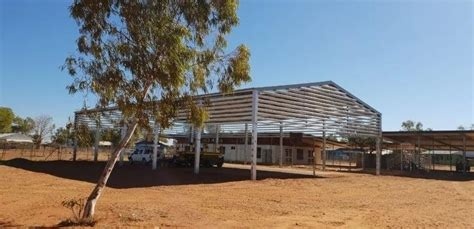
Urban Public Housing - Peko Road
A $3.4 million project, part of a larger program to increase public housing supply. The project saw the construction of six new 1-bedroom units for individuals on the Northern Territory's social housing waitlist.
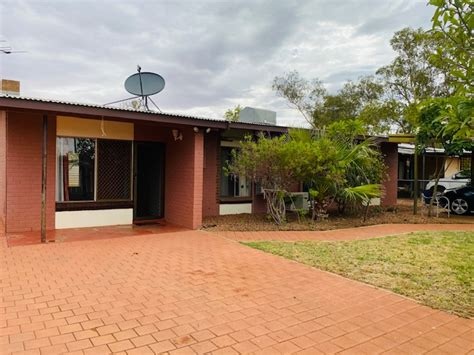
Venture Housing - Social and Affordable Homes
A $6.9 million partnership to deliver twelve 2-bedroom social and affordable homes. The project is designed to provide housing for those in need, including older women at risk of homelessness and Aboriginal people eligible for social housing.

Territory Energy Link
A multi-user, multi-asset infrastructure corridor running approximately 670km from near Elliott to the Middle Arm Precinct in Darwin. The 130m wide corridor is planned to support buried services including gas, water, optical fibre, and future hydrogen pipelines, connecting the Beetaloo Sub-basin to Darwin.
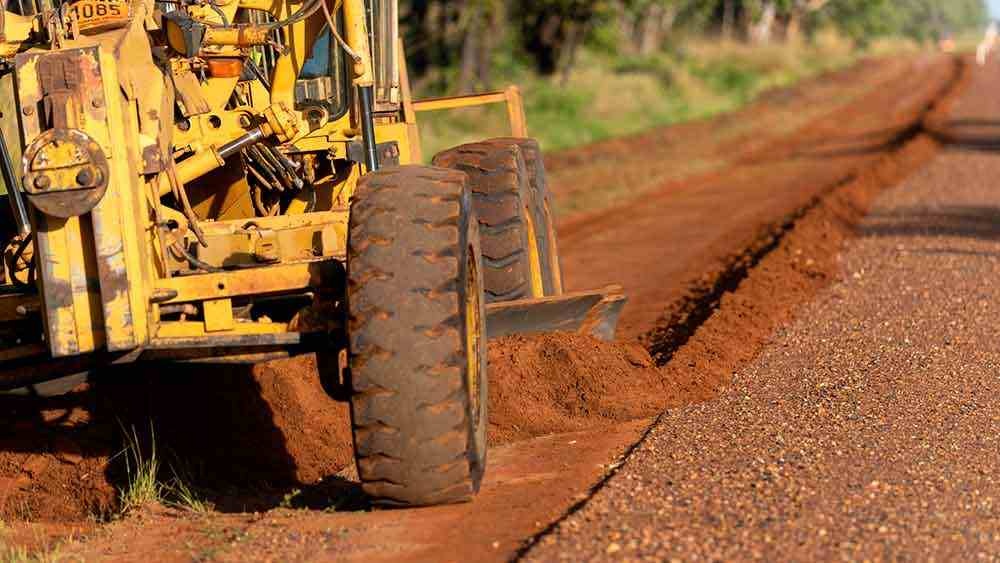
Employment
Employment conditions in Barkly face significant challenges, ranking among the bottom 10% of areas assessed nationally
Barkly's workforce is balanced across white and blue-collar jobs with varied sector representation. As of June 2025, its unemployment rate stands at 10.8%.
In Barkly, 1,066 residents are employed while the unemployment rate is 4.9% higher than Rest of NT's rate of 5.9%. Workforce participation in Barkly is lower at 47.3%, compared to Rest of NT's 50.7%. Key employment industries include agriculture, forestry & fishing, education & training, and public administration & safety. Barkly has a strong specialization in agriculture, forestry & fishing, with an employment share 9.6 times the regional level.
Conversely, health care & social assistance has limited presence at 2.5%, compared to the regional average of 18.8%. The area offers limited local employment opportunities, as indicated by the Census working population count versus resident population. Between June 2024 and June 2025, Barkly's labour force decreased by 1.6% and employment fell by 1.8%, keeping unemployment relatively stable. In contrast, Rest of NT saw employment contract by 1.7%, the labour force fall by 1.8%, and a marginal drop in unemployment. Jobs and Skills Australia's national employment forecasts from May 2025 suggest that over five years, national employment will expand by 6.6% and by 13.7% over ten years. Applying these projections to Barkly's employment mix indicates potential local growth of approximately 3.8% over five years and 9.3% over ten years.
Frequently Asked Questions - Employment
Income
The area's income levels rank in the lower 15% nationally based on AreaSearch comparative data
AreaSearch's data for financial year 2022 shows Barkly's median income was $46,210 and average income was $53,515. This is lower than national averages. The Rest of NT had a median income of $51,655 and an average of $61,577. Based on Wage Price Index growth of 10.44% from financial year 2022 to March 2025, current estimates for Barkly are approximately $51,034 (median) and $59,102 (average). The 2021 Census reports that incomes in Barkly fall between the 1st and 11th percentiles nationally. The earnings profile shows 36.2% of individuals earn between $800 - 1,499 per week, differing from metropolitan areas where the $1,500 - 2,999 band dominates at 33.6%. Housing costs are modest, with 94.7% of income retained, but total disposable income ranks at just the 22nd percentile nationally.
Frequently Asked Questions - Income
Housing
Barkly is characterized by a predominantly suburban housing profile, with a higher proportion of rental properties than the broader region
The dwelling structure in Barkly, as evaluated at the latest Census, comprised 94.8% houses and 5.1% other dwellings. In comparison, Non-Metro NT had 85.0% houses and 15.0% other dwellings. Home ownership in Barkly was 10.2%, with mortgaged dwellings at 1.3% and rented ones at 88.5%. The median monthly mortgage repayment was $109, well below the Non-Metro NT average of $1,087. The median weekly rent figure in Barkly was recorded at $70, compared to Non-Metro NT's $135. Nationally, Barkly's median monthly mortgage repayments were significantly lower than the Australian average of $1,863, while rents were substantially below the national figure of $375.
Frequently Asked Questions - Housing
Household Composition
Barkly features high concentrations of family households, with a higher-than-average median household size
Family households account for 77.9% of all households, including 39.7% couples with children, 17.1% couples without children, and 19.2% single parent families. Non-family households make up the remaining 22.1%, with lone person households at 19.8% and group households comprising 1.7% of the total. The median household size is 3.7 people, larger than the Rest of NT average of 3.0.
Frequently Asked Questions - Households
Local Schools & Education
Barkly faces educational challenges, with performance metrics placing it in the bottom quartile of areas assessed nationally
The area faces educational challenges, with university qualification rates at 7.4%, substantially below the Australian average of 30.4%. This represents both a challenge and an opportunity for targeted educational initiatives. Bachelor degrees lead at 4.8%, followed by postgraduate qualifications at 1.7% and graduate diplomas at 0.9%. Trade and technical skills feature prominently, with 32.8% of residents aged 15+ holding vocational credentials – advanced diplomas at 4.8% and certificates at 28.0%.
Educational participation is notably high, with 30.1% of residents currently enrolled in formal education. This includes 18.1% in primary education, 6.2% in secondary education, and 1.8% pursuing tertiary education. A network of 10 schools operates within Barkly, educating approximately 334 students. All 10 schools offer integrated K-12 education, providing continuity throughout students' academic journey.
Frequently Asked Questions - Education
Schools Detail
Nearby Services & Amenities
Transport
No public transport data available for this catchment area.
Frequently Asked Questions - Transport
Transport Stops Detail
Health
Barkly's residents boast exceedingly positive health performance metrics with both young and old age cohorts seeing low prevalence of common health conditions
Health outcomes data shows excellent results across Barkly, with both younger and older age groups having a low prevalence of common health conditions. The rate of private health cover is found to be quite low at approximately 47% of the total population (around 1,235 people), compared to 50.1% in the rest of the Northern Territory (NT). Nationally, this figure stands at 55.3%.
The most prevalent medical conditions in Barkly are diabetes and heart disease, affecting 7.1 and 5.1% of residents respectively. Notably, 81.7% of residents report having no medical ailments, compared to 77.5% in the rest of NT. As for demographics, Barkly has 5.5% of its population aged 65 and over (143 people), which is lower than the 8.3% figure seen in the rest of NT. Despite this, health outcomes among seniors in Barkly are above average and thus require more attention than the broader population.
Frequently Asked Questions - Health
Cultural Diversity
The level of cultural diversity witnessed in Barkly was found to be above average when compared nationally for a number of language and cultural background related metrics
Barkly's population shows above-average cultural diversity, with 4.0% born overseas and 57.9% speaking a language other than English at home. Christianity is the predominant religion in Barkly, comprising 65.8%, compared to 56.8% across Rest of NT. The top three ancestry groups are Australian Aboriginal (66.8%), Australian (10.6%), and English (10.6%), with notable differences including an overrepresentation of Russian at 0.3% in Barkly, compared to 0.0% regionally.
In terms of ancestry (country of birth of parents), the top three represented groups in Barkly are Australian Aboriginal, comprising 66.8% of the population, which is substantially higher than the regional average of 54.3%, Australian, comprising 10.6% of the population, and English, comprising 10.6% of the population. Additionally, there are notable divergences in the representation of certain other ethnic groups: Russian is notably overrepresented at 0.3% of Barkly (vs 0.0% regionally).
Frequently Asked Questions - Diversity
Age
Barkly hosts a very young demographic, ranking in the bottom 10% of areas nationwide
Barkly has a median age of 26, which is younger than both the Rest of NT figure of 31 and the national average of 38. The age profile shows that individuals aged 15-24 are particularly prominent at 19.2%, while those aged 45-54 make up only 8.4% of the population, which is smaller than in Rest of NT. This concentration of 15-24 year-olds is higher than the national figure of 12.5%. Between 2021 and present, the age group of 25 to 34 has grown from 18.8% to 19.6% of the population. Conversely, the 0 to 4 cohort has declined from 8.4% to 7.3%. By 2041, Barkly's age profile is projected to evolve significantly. The 25 to 34 age cohort is expected to increase by 117 people (23%), rising from 515 to 633. In contrast, population declines are projected for the 55 to 64 and 35 to 44 cohorts.
